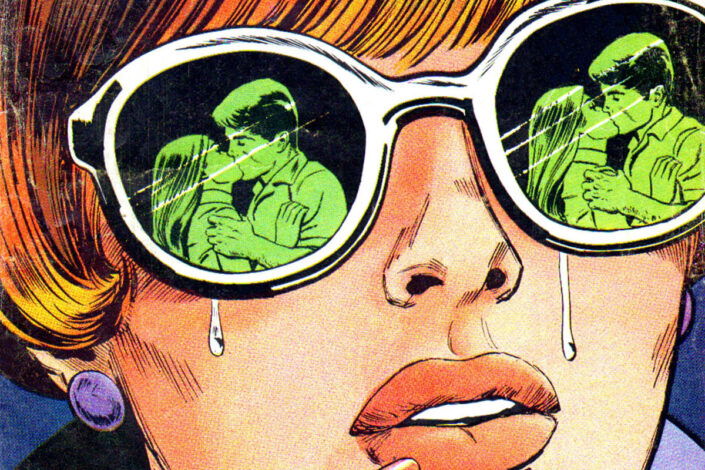
Nowadays, comics are de facto synonymous with superheroes. In reality, it’s just one genre among many, but it’s the one that has constantly dominated the market for the longest time and it’s now hard to get away from it. This was not always the case. At some point, horror and crime comics were all the rage, and there was even a romance comics craze.
Post-war America was tired of superheroes. It was 1947 and the comic book market was forced to evolve. At Timely Comics (it was not Marvel Comics yet), Martin Goodman started reducing the number of superhero books and replacing them with humor titles. It was a trend that Archie Comics Publications started with his teenage-oriented comics. Others followed, bifurcating into teenage romances.
The First Romance Comics, A Simon & Kirby Production
Produced for Hillman Periodicals, My Date Comics was created by Joe Simon and Jack Kirby, and only lasted for 4-issues. But this encouraged the duo to think bigger, to get away from the silliness of the teenage romance comedy comics, and to focus instead on the romance elements from a serious point of view. This led to the publication in the Crestwood Publications imprint Prize Comics of “Young Romance #1” in September 1947 (cover date).
Considered to be the first romance comic, Young Romance was inspired by Pulp magazines which were presented as “true love” stories, but Kirby and Simon followed their own way and connected with younger women. Even if the covers announced “All True Love Stories,” it was mainly fabricated tales that mixed romances with other genres (like crime), offering some character developments along the way and a happy ending or a tragedy.
Young Romance was not an instant hit. The market for romance comics was nonexistent and, as such, the targeted audience had to learn of the existence of the comic book first. But one year later, without any concurrence to slow it down, the creative team (Kirby, Simon, and Jack Oleck) put out new stories that felt fresh for their time and the title built a solid readership. Naturally, other publishers started noticing it.
If you are interested, Fantagraphics published a collection of the best of Simon and Kirby’s Young Romance:
The Golden Age of Romance Comics
In September 1948, Martin Goodman launched My Romance, then it was Victor Fox’s turn with “My Life, True Stories in Pictures” and Fawcett’s “Sweethearts.” By 1949, romance comics titles started to fill up the newsstands. By the end of that year, the genre went from 6 comic books to more than a hundred, and around one-fourth of all comics sales.
While Simon and Kirby’s romance stories were sometimes a bit experimental, they still were about people who felt real. It was not the case for every comic in the genre and, once the Comics Code took effect in 1954, even romance titles were forced to tone things down, to deliver less daring stories, and to appear less “risqué.” The relationships depicted in the comics were less challenging, a tamed formula took over with more traditional values (more patriarchal overall). It was to be clean and proper. Still, romance comics persisted. Its Golden Age was behind, but the genre was well-established and the declining popularity was slow.
However, between the soap operas on TV, the success of the Harlequin romance novels, the growing comics underground scene, and the massive comeback of the superheroes, the romance comics had mostly disappeared by the mid-1970s. DC Comics finally canceled Young Love in 1977, a few months after Marvel did the same with its own romance titles.
You can find different collections of romance comics by master cartoonists:
The Evolution of Romance Comics
Since then, romance comics have become rarities. The genre never made a complete comeback. However, romance itself persisted. With time and the success of the genre, it became an accepted part of the superheroes’ lives–what would be Spider-Man without his complicated love life? and how Superman’s adventures would have evolved without Lois Lane.
In the indie scene, romance found a different place. A comic book like Love and Rockets by the Hernandez brothers explored romance through a lens of realism, cultural diversity, and complex character development while Strangers in Paradise by Terry Moore blended it with drama and crime. Memoir comics also frequently feature romance stories with a deeply personal approach, like in Blankets by Craig Thompson.
And if American comics let the genre fizzle away, it’s not the case with Japanese comics. The growing popularity of manga and webtoon brought a lot of romance series to a new audience that is now open to reading new American authors like Alice Oseman with her Heartstopper series.
If you want to explore the subject of romance comics further, Michelle Nolan published a book titled “Love on the Racks: A History of American Romance Comics.”